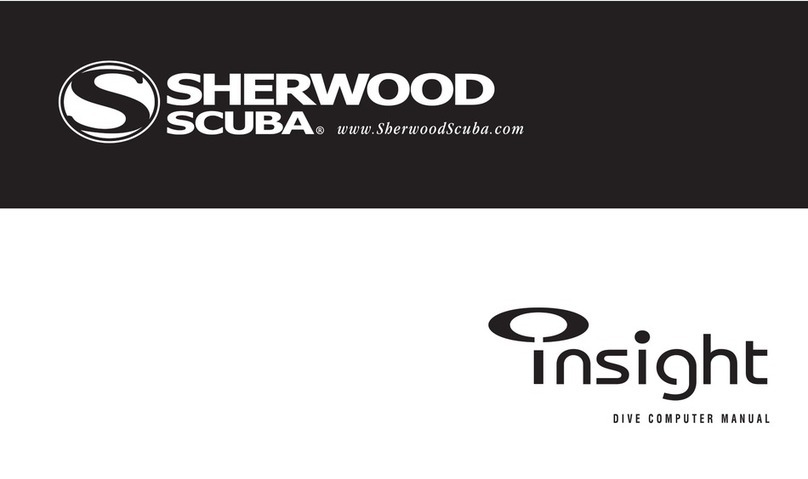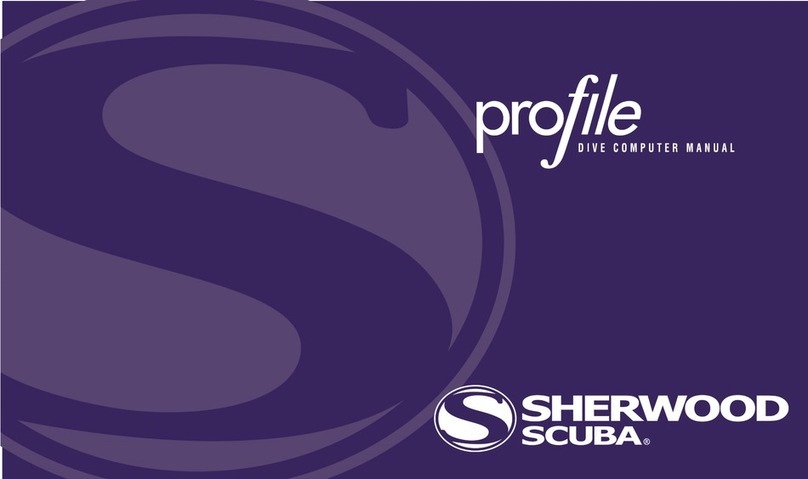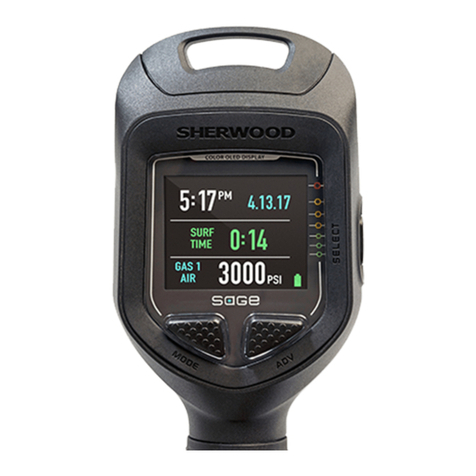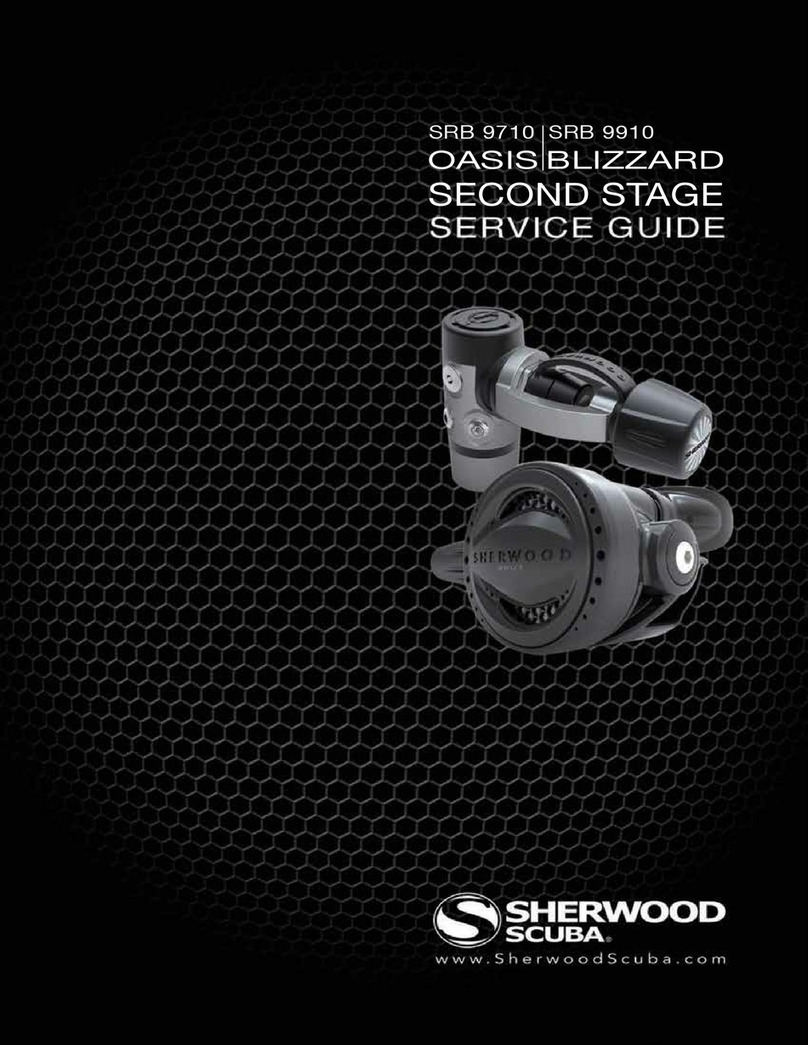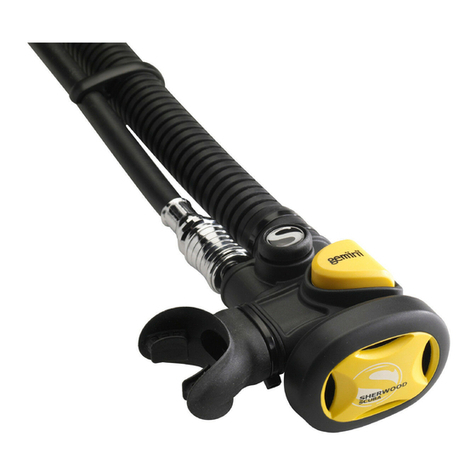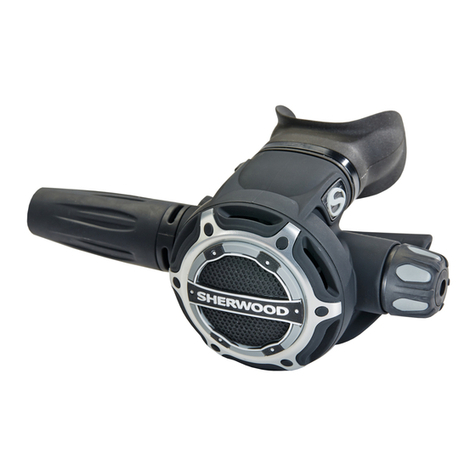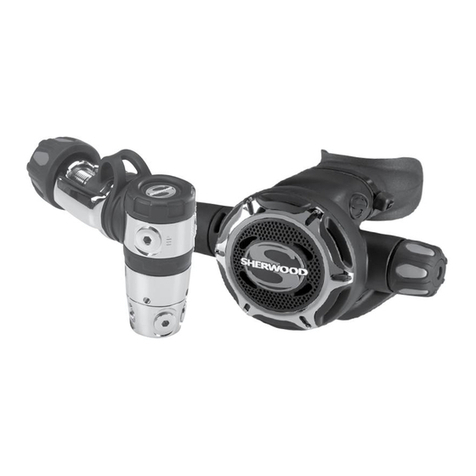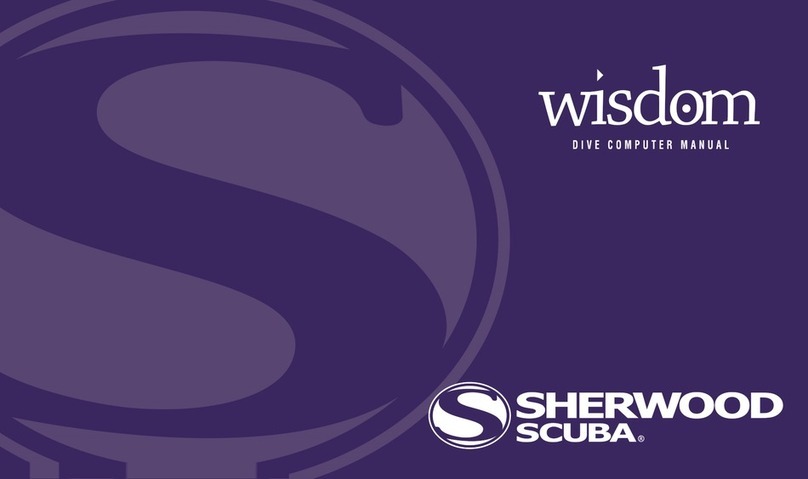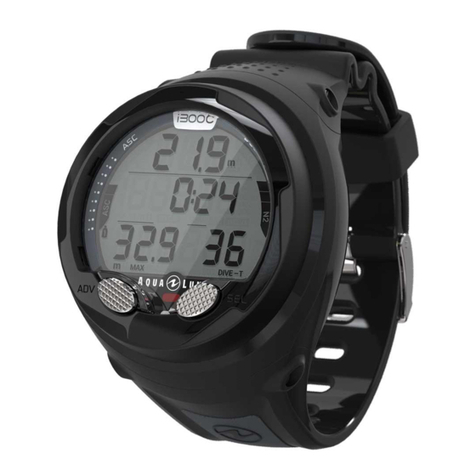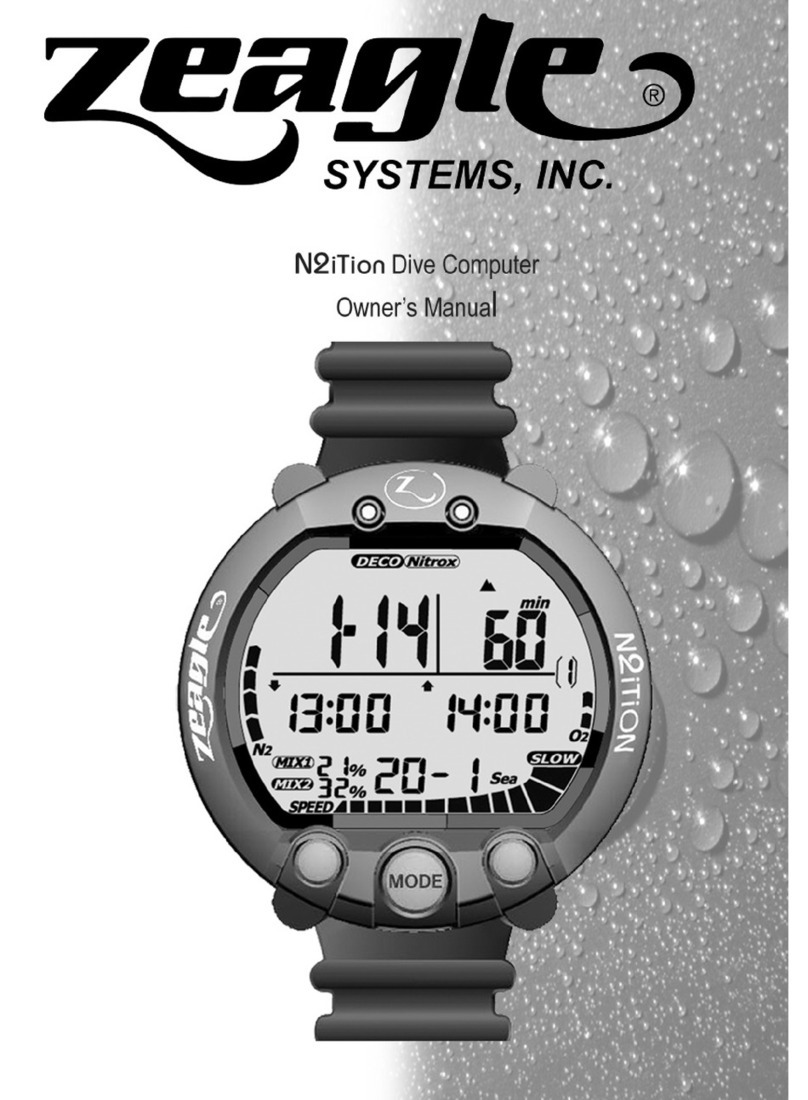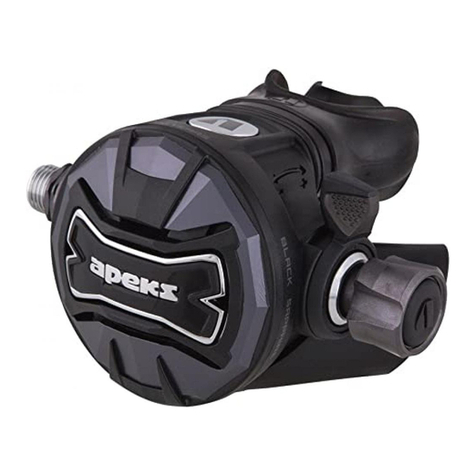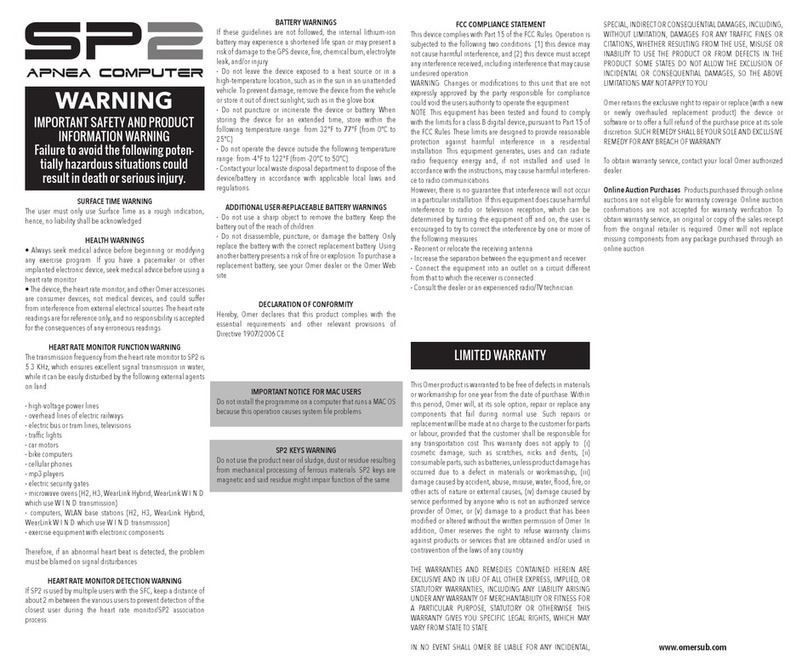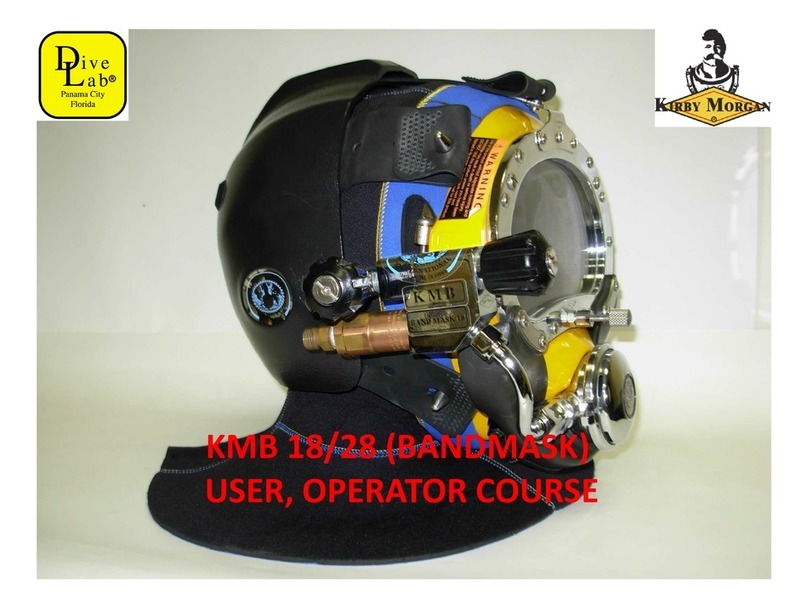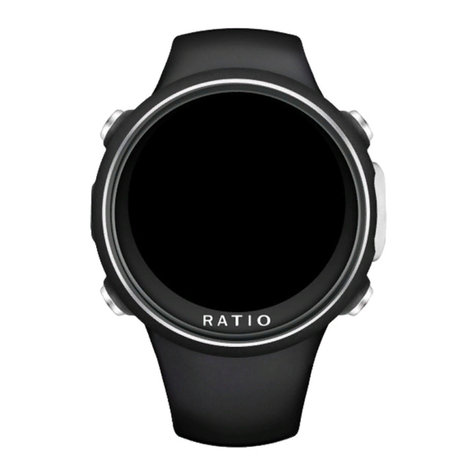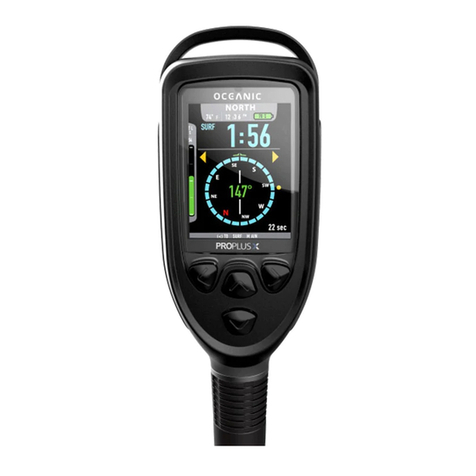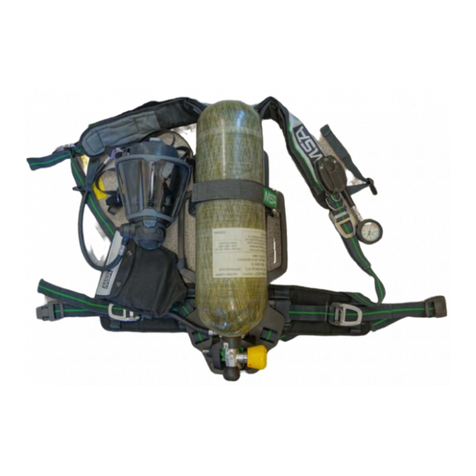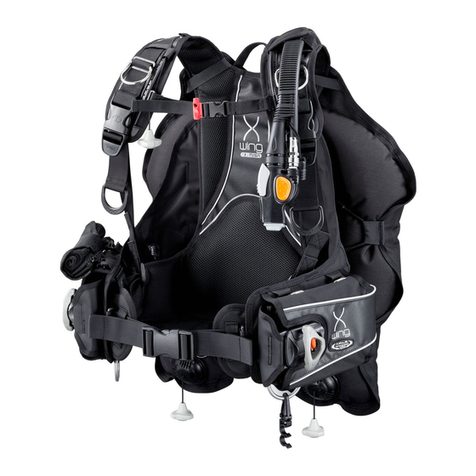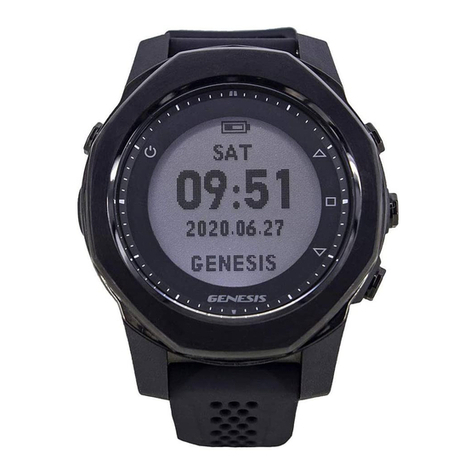
www.sherwoodscuba.com
5
ENRICHED AIR NITROX SERVICE
The Sherwood regulator presented in this manual has been designed and manufactured to allow the use of Enriched
Air Nitrox (EAN) gas with an oxygen component not to exceed 40%.
In order to maintain this option the user must ensure that the regulator is protected from the introduction of
hydrocarbons. The introduction of hydrocarbons into the regulator may increase the risk of fire when used with EAN.
When servicing the regulator, the technician must be aware of this requirement and exercise caution not to
contaminate the regulator with hydrocarbons (Petroleum based greasy substances). This requires a clean workplace, free
of oil, grease, debris and other contaminants. Additionally in order to return the regulator to recreational EAN service,
the overhaul procedure must have a cleaning provision to remove all hydrocarbons before the regulator is reassembled.
Do not substitute parts or use lubricants other than Tribolube 71 or Christo-Lube MCG 111. Silicone lubricants are not
acceptable and increase the risk of a fire hazard.
On the other hand please also be aware that despite all this recommended precautions and lubricants, none are intended
to be used in conjunction with EANx concentrations higher than 40% such as the ones required during Technical Diving.
FACILITY REQUIREMENTS
The service facility is perhaps the most important asset of any professional dive store. It should be clean, well lighted,
and stocked with a complete inventory of parts and manufacturer’s specialty tools for the products your store sells. As
a minimum requirement, your service facility should be equipped with the following items:
• Ultrasonic Cleaner - Select the right size model that can keep up with the volume of regulators that your
store services. A built-in timer and heater will help control the cleaning time and temperature of the solution,
since most solutions work best when heated.
• Bench Mounted Padded Vise - A vise is sometimes needed to hold the regulator secure – especially when removing
the first stage yoke retainer. Special care must be taken, however, to avoid damage that can result from improper use
of this tool. Vise must be lined with soft material like rubber or wood. Be sure to follow the instructions provided in this
manual.
• Magnification Lamp - Strong lighting and magnification are essential requirements for performing a thorough parts
inspection - especially when locating the cause of a small leak.
• Quality Wrenches & Sockets - When working with chrome plated brass parts, it is especially critical to use the correct
size wrench and to ensure that it fits properly over the part. The use of an adjustable wrench is very likely to cause
damage to your customer’s regulator, and should be strictly avoided at all times.
• Calibrated Inch-Pound Torque Wrench - it is important to follow the manufacturer’s torque values whenever they are
specified, in order to avoid over-tightening or under tightening a part. This is especially important for smaller parts and
fittings, when over-tightening can easily damage the part. Do not use standard wrenches for final torque.
• Calibrated Foot-Pound Torque Wrench - Torque wrenches that can be set for both inch-pound and foot-pound mea-
surements generally tend to be less accurate than wrenches that are designed to measure torque within a specific
range. Do not use standard wrenches for final torque.
• Manufacturer’s Specialty Tools - Specialty tools are critically important to performing each step of disassembly and
reassembly according to each manufacturer’s procedures. During the mentioned steps where the procedure clearly
indicates the use of a specialty tool, Sherwood Scuba strongly discourages
technicians the use of substitute or
make-shift tools to perform such steps. Sherwood specialty tools are required to perform service are listed on the fol-
lowing page.
WARNING – The introduction of hydrocarbons, lint, dirt and other contaminants into the areas of
the regulator subjected to high pressures (greater than 500 psi) and EAN mixtures containing more
than 40% oxygen may constitute a fire hazard and may subject the user to serious injury.

